EvilGoodGuy
joined
I am a Senior developer for the "Guard Duty" and "Operation: Black Mesa" mod teams. I joined Guard Duty in June of 2010 and OBM in July of 2011.
My main focus and skill set lies with Level Design, though I also create world textures and 3D props as well. I have been Source mapping since 2006 and have been creating textures for nearly just as long. My skillset with 3D modeling has been gaining ground since May 2011.
Level Design, and video games in general, are truly a great passion of mine. I am always striving to learn more and become the best artist I can be, so that one day I can achieve a career doing what I love.
This is my latest Operation Black Mesa/Guard Duty Dev Blog, which can also be viewed on the official forums here: Tripminestudios.com
--------------------------------------------------
Hey everyone,
today I'm bringing you a blog that, by the end, will hopefully give you a decent understanding of why my role is titled "Senior Level Designer". You'll also have a decent understanding of what the level design team endures under my harsh iron fist 
Also, full disclosure - I'm not a real professor. I know, I know... it's quite shocking. Nevertheless, I hope you find this blog intellectually stimulating!
Summary of Contents:
-Display and explanation of common techniques I use for feedback, critiques, and teaching opportunities.
-Display and explanation of my use of dev maps.
-Examples of hands-on revamping that I often need to provide
Introduction:
I'll try to keep the personal stuff brief since I've been over it a few times before and I've never been one to talk much about myself. My name is Brandon "EvilGoodGuy" Smith and I've been a part of the team since 2010. So I'm one of the few OG members. My skill set started out as mere level design. Then because of necessity and intrigue it quickly expanded into texture art, then eventually into prop art, then basic animation; and recently has leaked over into a tiddly little bit of weapon art. Strangely enough I've never been into coding much, although humorously enough when I tell people I do video game design, 99 out of 100 times their response is "oh ya? How long have you been into coding?". 
My main focus, however, has constantly remained level design regardless of my ever growing skills in other areas.
I'd like to preface this by pointing out that the vast majority of us are amateurs, or at least started out as amateurs, and are constantly improving through the course of our work and from sharing each others knowledge and feedback.
My feedback workflow, and by result - this blog, contains in depth critiques of other level designers work at various points in time. Many critiques I provide often times end up resulting in me personally reworking, sometimes from the ground up, other peoples work. I'll be showing you examples of before and after images. The point of this is not to bash anyone's work, but to simply provide insight into what it's like for me. So please be respectful, guys 
Important side note: Essentially every map/image shown here is not final, regardless if it's an "after" image.
Dev Maps
Let's start with discussing dev maps.
What I refer to as "dev maps" are essentially display/sample maps that I've taken upon myself to create in order to provide the level design team with functioning base examples of differing environments, available prop sets, available texture sets, technical examples of lighting and optimization techniques, etc, etc.
I wish I could say this is an original idea, but I honestly have been aware of the concept for quite some time. When Tomb Raider: Anniversary was first released in 2007, you were able to unlock and play a dev map that the development team had put together in order to help their artists define the major themes and style of each major environment.
I use my dev maps for largely the same reason - consistency throughout the game, realistic style, and as learning material for other artists.
I like to litter my dev maps with game_text entities that I leave design tips in for level designers to read while in Hammer, as well as point_worldtext tips/instructions that level designers can read easily while in-game.
Another blog you might be interested in where I mention my use of a dev map can be seen here: EGGs Prop Party
Below you can see a collage of some of my more popular dev maps.
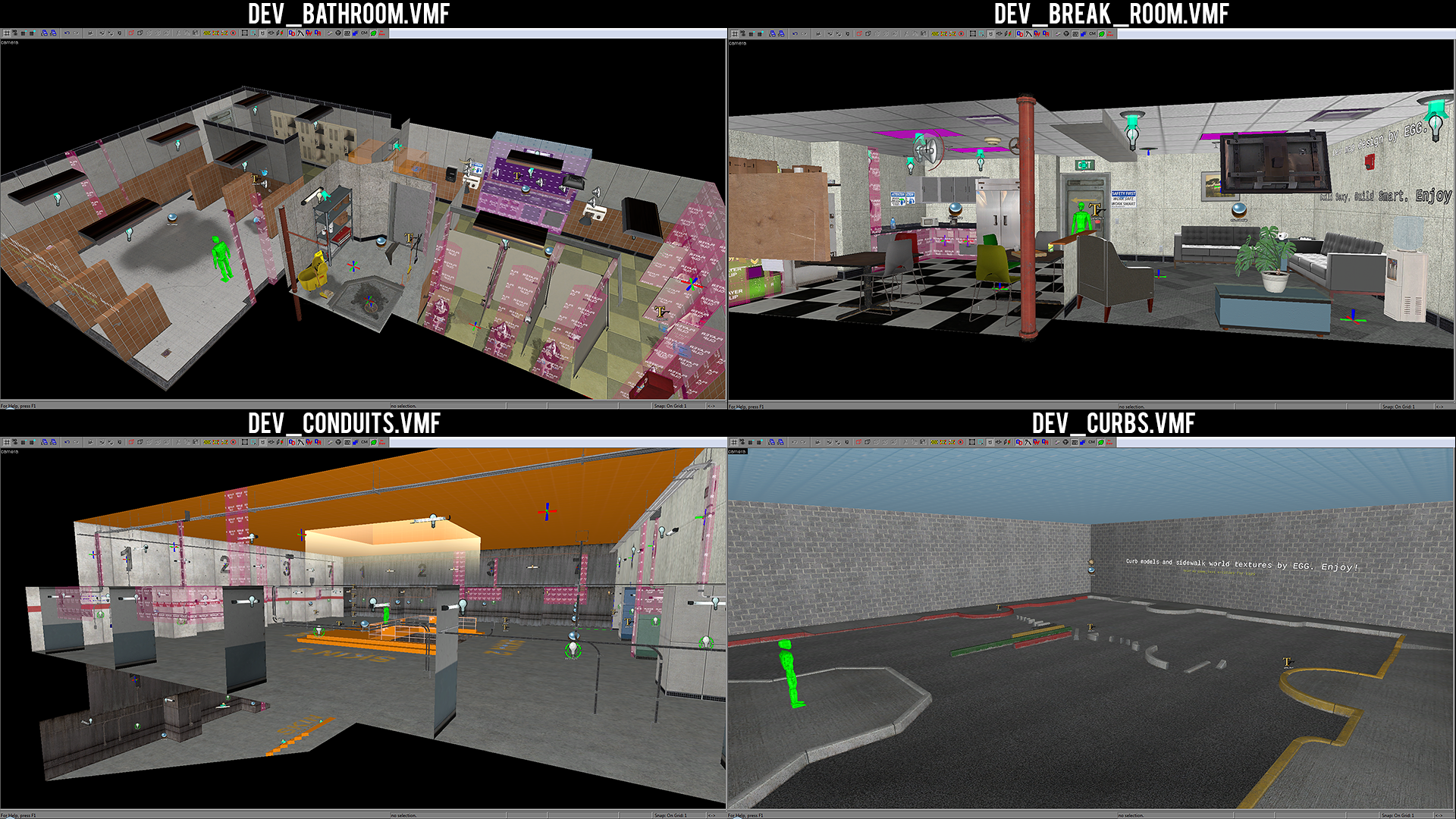
Dev_lighting is one that I put together somewhat recently because some level designers still struggle with advanced lighting techniques. From what I've noticed, lighting in general is something that the majority of the Source mapping community struggles with.
Mr. T was kind enough to help me design the map 
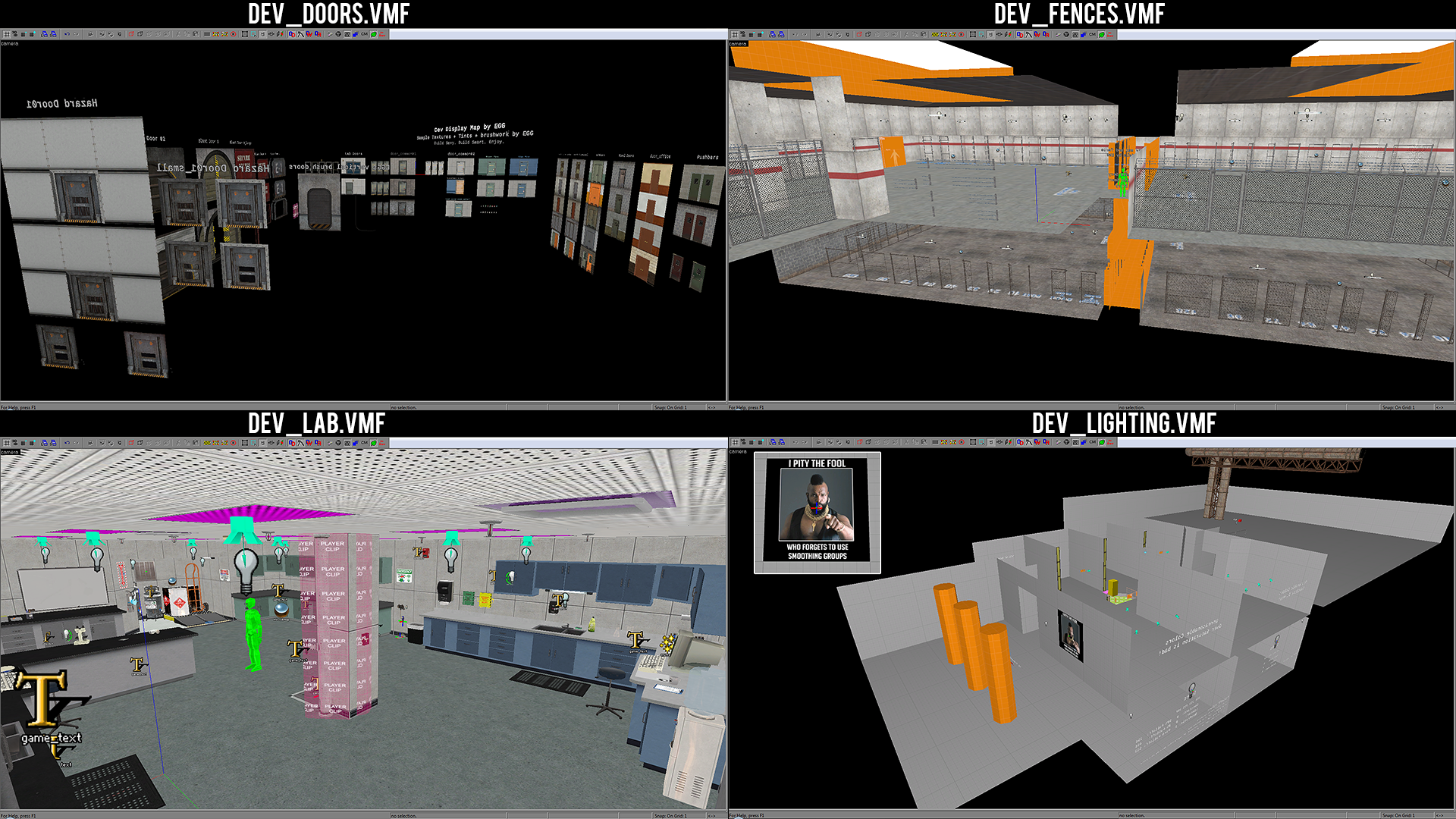
In case you are curious, the tag line that I display in all my dev maps is "Build Sexy. Build Smart. Enjoy" 
Map/Reference Analysis
An extremely important procedure is to properly analyze your reference material, whether it be concept art, real life photographs, or artwork from another game, and identify the style, theme, and structural design. In our case it is dominantly the environments from the original game.
A handy tool that some of us use, which I urge everyone on the team to use, is Crafty by NemsTools. It's a handy program that allows you to preview the original maps outside of their game engine and position your camera wherever you want in order to get a good look at the environment. Often times I have it open on a 2nd monitor while I work on my Level Design.
I personally don't always do the following method, mostly because I've been staring at the original games for so many years that I have them basically imprinted into the back of my eyes, and because I've just always had a natural eye for this sort of thing.
The handy technique in question is to take a screenshot of the original game, then mark it in photoshop (or another image editing software equivalent) in order to help yourself visually identify and catalogue the environments important design elements.
Below will be one example where I've demonstrated this method to a fellow level designer who was considering a particular area to be in the final/near-final stage of development, when in my professional opinion it was quite far from it.
The area in question can be seen below:
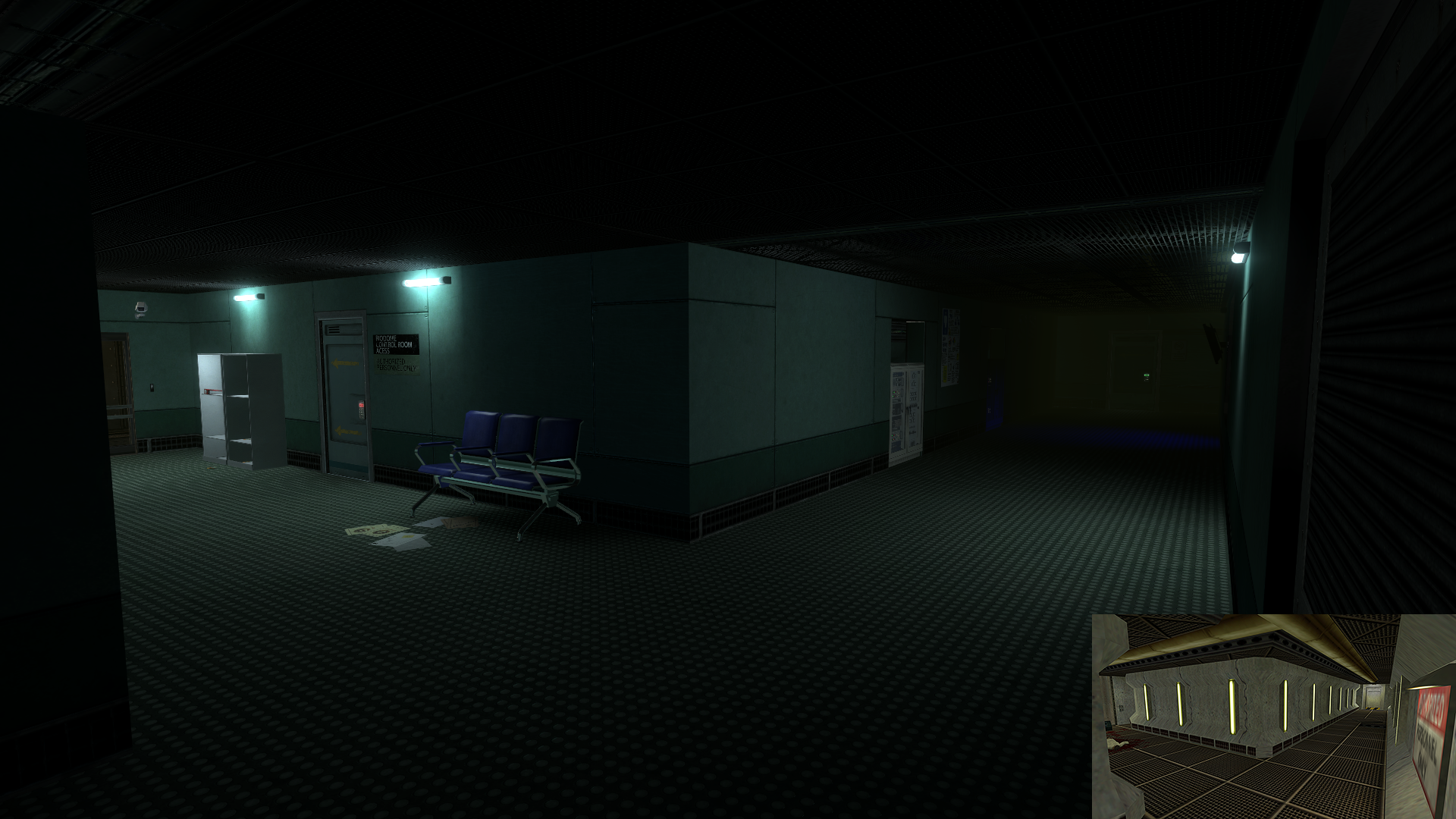
The room was quite lacking in any distinct style or architecture, especially when regarding it's appearance in relation to the original game.
The following image is the demonstration I created for him as an example for how to easily identify key design elements:

This is one of the scenarios where I went ahead and recreated the area from scratch in order to accompany the Analysis Demonstration.
As said in the intro to this blog, the area I recreated is not final. Both because I try to avoid spending too much time on other peoples maps and because I don't want to rob the level designer of the opportunity to at least improve upon and finalize the area. Hands-on experience is important for improving. But so is my own time, which I could be spending working on my own maps, rather than reworking another developers map multiple times. So it's a difficult balance sometimes of knowing how much to rework.
Below is my recreation, using the analysis image as a reference:

Bonus points if you know what area this is 
Hands-On Revamping
As mentioned and shown above, my feedback often times leads me to revamping another developers map depending on the amount of feedback I have and the level of attention required.
It can range from me committing small changes to very extreme changes. Sometimes if I'm unsure of a design direction I'll simply play around with the design until I reach something I feel good about, then converse with the level designer about whether to simply hand off the new version or have them use it as mere inspiration for changes.
Shown below is a original area that the level designer created, which I felt could be improved upon. In this case, since it's not present in the original game, and no particular real-world photos or concepts were used, the analysis image technique doesn't necessarily apply. So this is when I can choose to analyze his work and provide a "critique screenshot", which I'll demonstrate later in the blog, or just have a go at revamping it myself.
In this case, I had some ideas straight away, but went ahead and got my hands on it directly to experiment.
note: The walls have been made non-visible to make it easy to see the changes within the building.
Before Revamp:

After Revamp:

Since I chose to just experiment until I found something that suited it nicely, in my opinion of course, I then am tasked with writing up a lengthy changelog/explanation of what I changed and why.
I won't detail that entire changelog/explanation here, but I'll provide below some basics:
-metal racking in an inaccessible location / elevated section unnecessary and unrealistic
-fence is unnecessary/not appropriate for this indoor use
-I-beams were unusually rusty for this environment
-foundational elevation was okay, but not necessary
-ceiling lights could be better attached directly to ceiling, rather than hanging
-purpose of room is not fully defined
------------------------------------------------------
-Converted room to a small mechanic shop
-added rollup door
-changed wall and support beam textures to better reflect environment
-changed shelving to better reflect environment
Extreme Revamps
Illustrated below is an example of an extreme revamp, which I engage in every now and again when the level designer is struggling with multiple design aspects, or if I'm very unsatisfied with the results and are forced to put my foot down for the sake of quality consistency.
Before Revamp:

After Revamp:
note: again, this in particular is very early and very outdated work
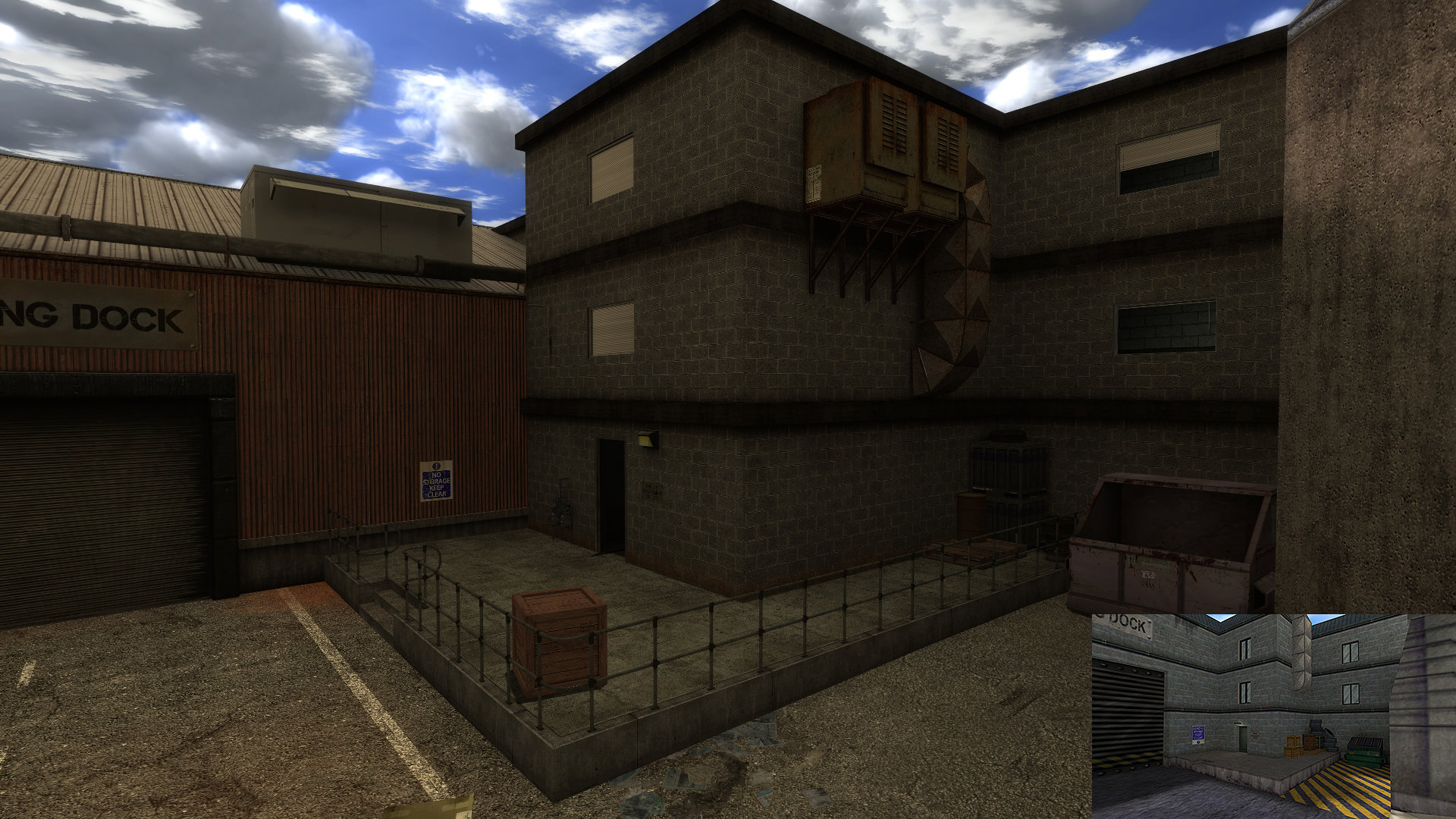
If you're a Blue Shift fan, then you probably recognize this area from the chapter "Captive Freight".
In the original game, the building the screenshot is focusing on contains offices and a stairwell that connects the basement (with level transition) to the different stories of the offices.
In the previous level designers version, he had completely removed the stairwell, as well as moved the offices to the complete opposite side of the map, while heavily changing the architecture of the building and area as a whole. This was partly because of what happens when you try too hard to make your map look unique and end up failing to keep the design formula that defined the original. Essentially robbing the map of any nostalgia. At that time there was also a lack of proper team feedback to help guide the level designer, resulting in perhaps a bit too much extreme experimentation.
Critique-Screenshots
As mentioned previously, this is my primary form of feedback that I supply to level designers. This is of course in addition to writing up more detailed explanations.
Essentially, this method involves me taking a screenshot of their work, then making visual marks on it, with critiques and suggestions written directly on the screenshot. I find that this helps quite a bit since it's very visual and is unfortunately necessary because we do not have the luxury of working together in person. Some of us are separated by hundred of miles and even oceans. I say unfortunately, because it does indeed take a lot of time to prepare this method of feedback, especially when I do it for an entire chapter. Sometimes it can take more than a day to prepare the first pass of feedback if I'm critiquing an entire chapter, depending on how much I think it needs improved.
Sometimes I'll combine this method with the hands-on revamping if there are reasons that call for it.
Combining the 2 methods can be seen below:
Top/Red = Before image with visual listing of critiques and suggestions
Bottom/Green = After my changes with visual listing of major differences

The area demonstrated above can be seen below, both before and after my revamp.
Before Revamp:
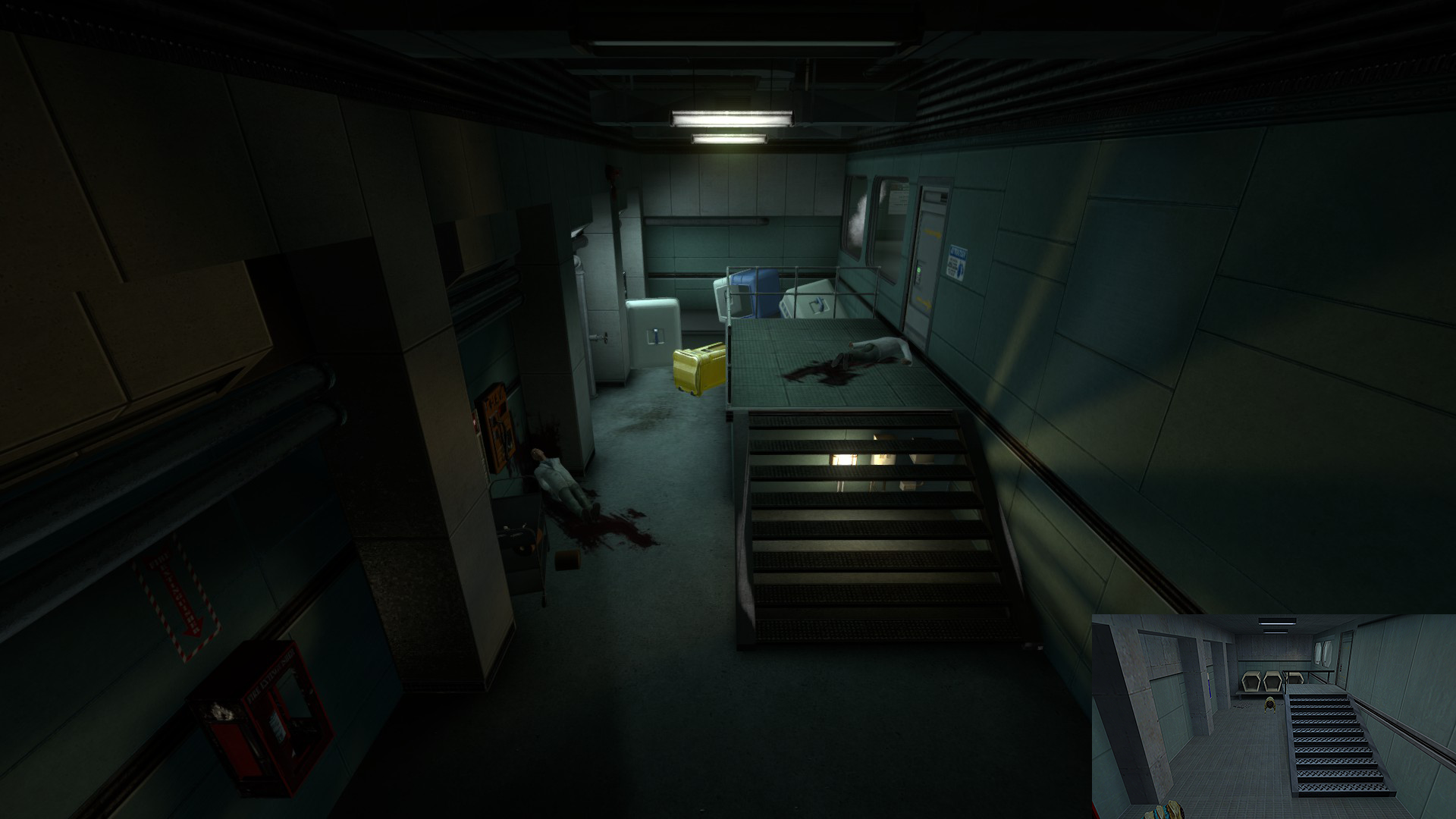
After Revamp:
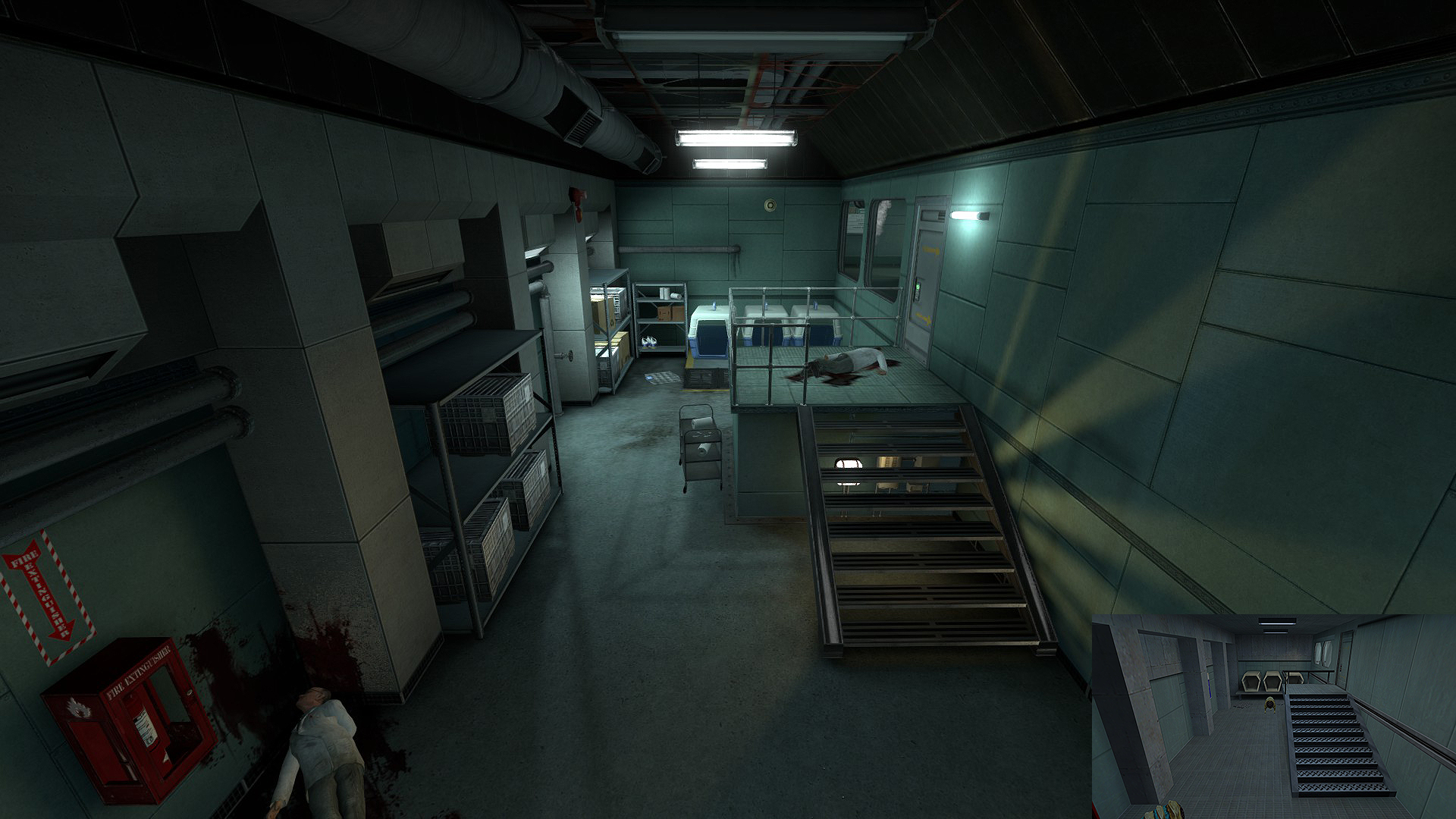
Giving feedback and making changes to other level designers work actually takes a large chunk of my time these days. Literally hundreds of hours have been spent working on other developers maps. Which honestly is one of the reasons I'm making this blog - so that I get at least some credit for the large amount of work I dedicate to it.
One thing that's not shown in this blog is the private videos I've created and supplied for the team, which essentially serve as training videos. Which I'll probably release publicly once the project is complete.
Just for fun I made a little joke wallpaper image that has a large collage of some of the critique-screenshot feedback that I've given out somewhat recently. I blurred the images slightly to reduce the chance of spoilers, but if you look closely you can see just how much feedback I put into the screenshots and how many there are.
Enjoy zooming in and trying to decipher where these outdated screenshots were taken 

It's all in the Details
As mentioned previously, sometimes the critiques, and thankfully the revamp work, is relatively minor.
Below is an image of a before and after revamp that didn't really deserve a critique-screenshot, but rather just a simple text description of necessary improvements and changes I made.
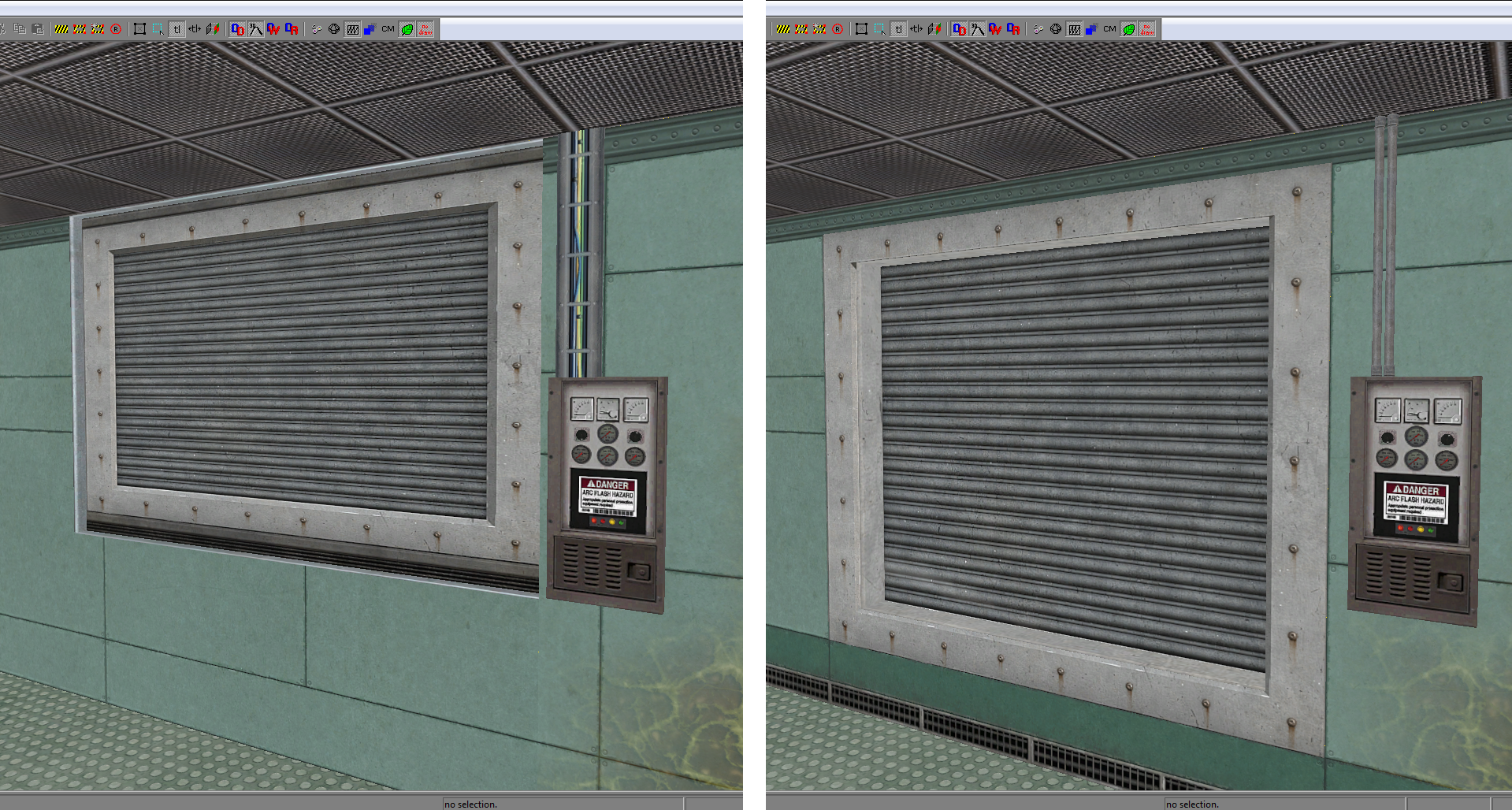
-indent area aligned with edges of wall texture
-wall support portion of texture continued across the top for structural support
-indent texture rescaled and brushes added for more actual depth
-flat cables brush replaced with 3d models of electrical conduit
-wall texture replaced with striped variant for more contrast to help define the edges of the room
Not to steal Chris' thunder, but below is an area that I assisted in revamping for him, which is shown in the recent summer update. It's important to note that with each revamp and large wave of critiques that I throw at him, he improves noticeably and accepts my intense critiques with grace and professionalism 
Before Revamp:
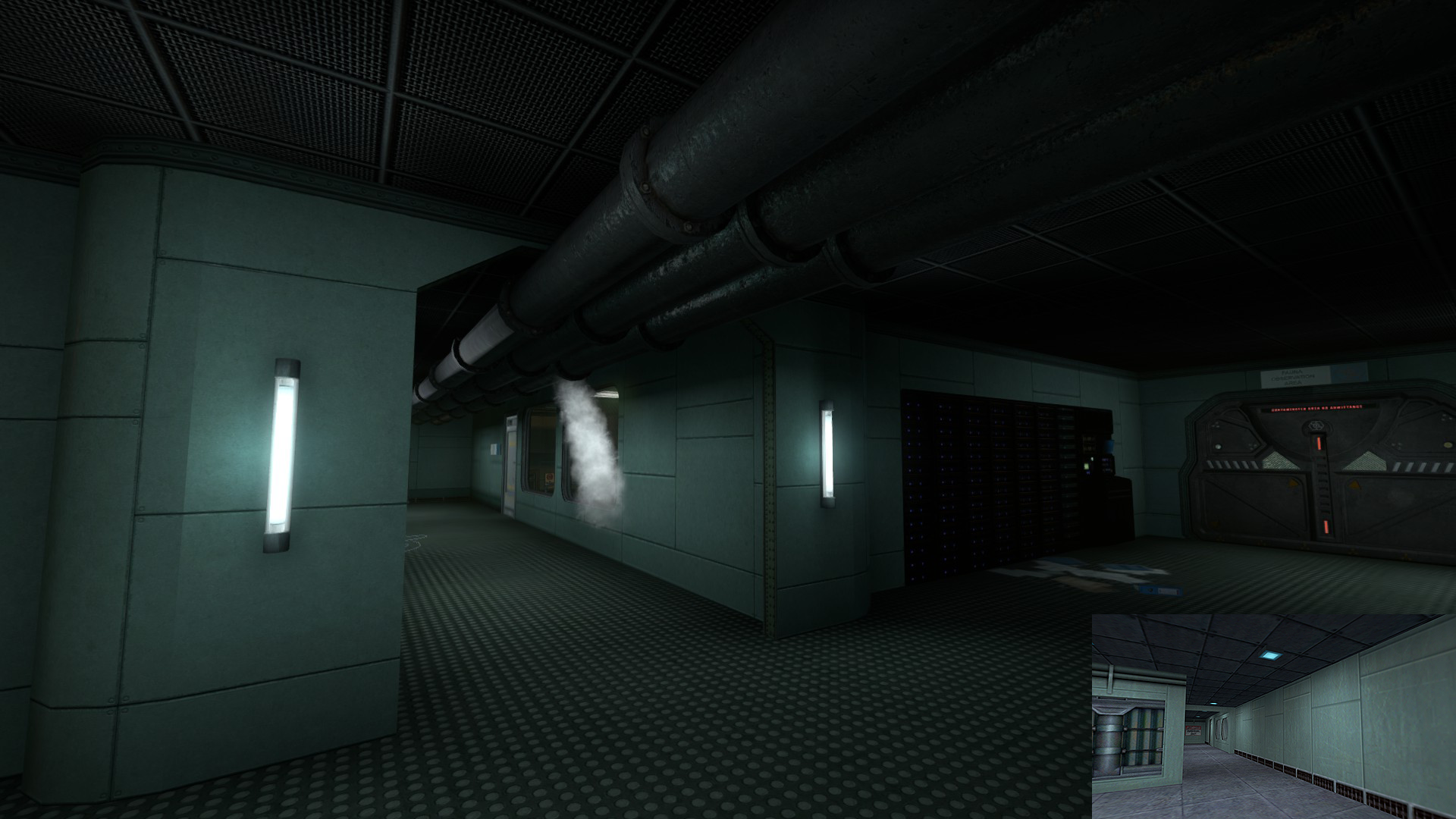
After Revamp:
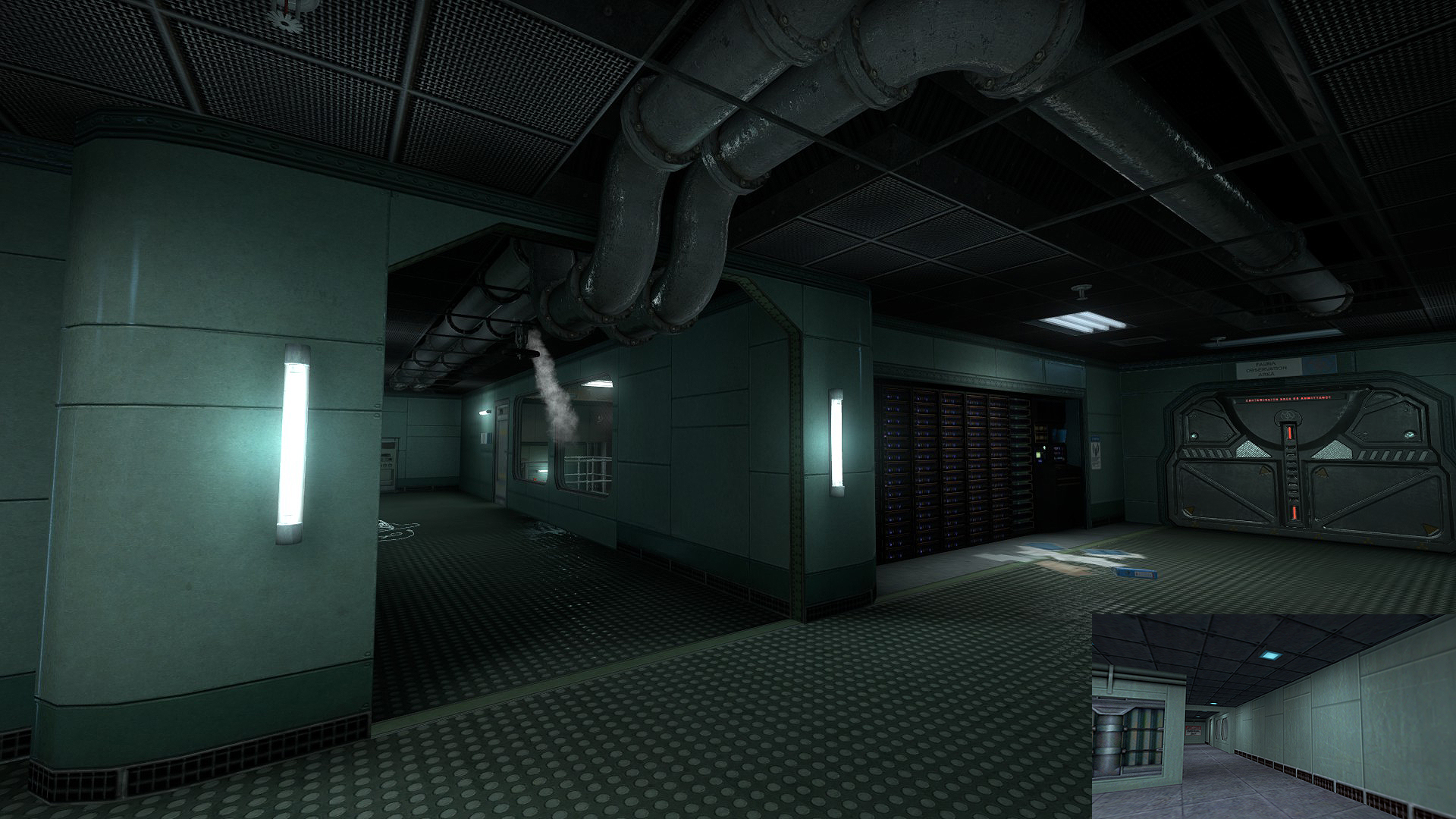
major changes:
-pipes recessed into the ceiling with accompanying supports
-valve wheel added to pipes
-lighting reworked to remove some intense shadows
-detail props added to ceiling
-frame built around servers
-many texture re-alignments
-floor repetition broken up with trim brushes
-smoothing group changes/fixes
The above area is shown to help demonstrate how sometimes all it takes to make an area look just that much better is a little bit more planning and careful sculpting of the environment. So my advice to anyone interested is to slow down a bit when you near the final stages, and take the extra time and effort to carefully craft the environment you are working on.
Conclusion
Well, that's it for this blog guys! It's been a pretty lengthy one and still only shows a fraction of the work I've done critiquing the level design departments work, not to mention the numerous revamps I've done to my own maps hahaha.
Hopefully you maybe learned a little something too. If you enjoyed this type of blog, let me know and I'll consider doing another of this type in the future.
Also, if you haven't already, check out my of2a1 Revamp Blog that I collaborated with Frag to make.
Have a good one, guys!

Source Developers
1,111 members Fans & ClansFor people and teams developing mods and games with Valve's Source engine.

Tripmine Studios
5 members Developer & PublisherWelcome to Tripmine studios group. More info will be added later on.
















Store.steampowered.com
There's no possible way that guard duty won't be MOTY.
You do a great job with modeling and mapping, keep it up!
Thanks CrikeyMate!
Awesome work in GD maps! :D
Thanks man :) Hopefully soon I will be able to post some more update screenshots for my GD maps, as well as my OBM maps.
Happy Birthday my friend
Hey, I have seen the work that you are doing with Guard Duty, and let me tell you it's awesome.
Thanks man :)
It's always great to hear people admire my work.
Make sure to keep on watching us, cause there is still plenty of great stuff to see in the future ;)